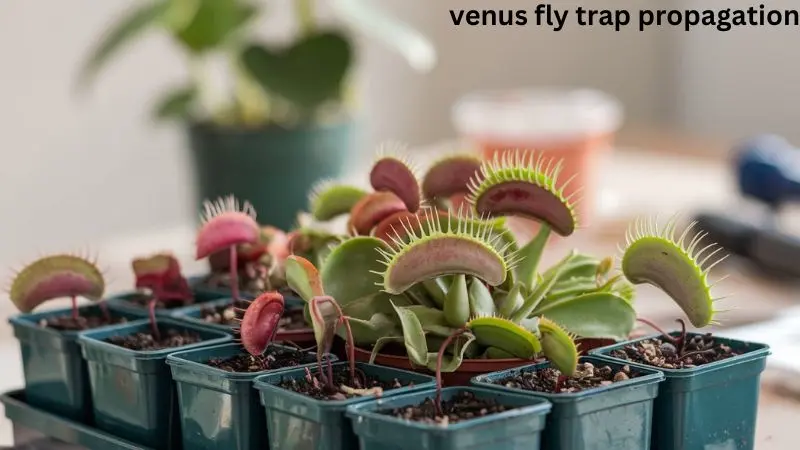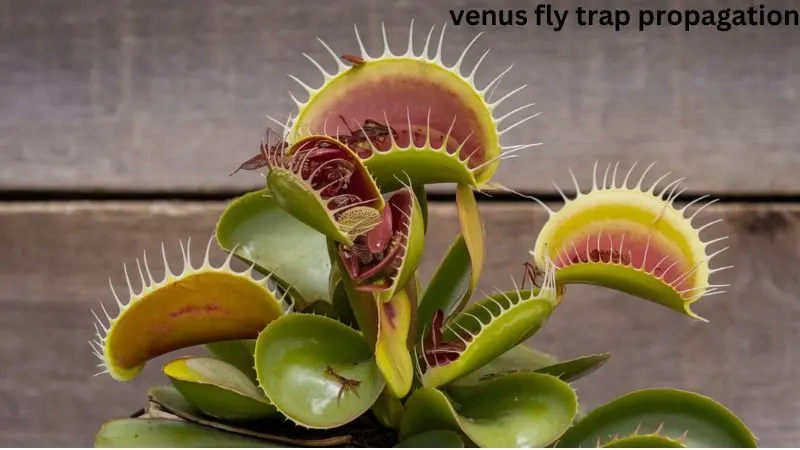Wildlife Areas
Venus Fly Trap Propagation: Complete Guide for Beginners
This article is brought to you by Bird01.com, where we delve into fascinating plant and wildlife topics. In this guide, we’ll explore the propagation of the intriguing Venus flytrap (Dionaea muscipula), a carnivorous plant known for its remarkable insect-trapping abilities. Whether you’re a seasoned gardener or just getting started, learning how to propagate Venus flytraps can be a rewarding experience. Read on to discover the different propagation methods and tips to ensure your Venus flytraps thrive.
Understanding Venus Fly Trap Propagation
Propagating Venus flytraps is not as daunting as it may seem. These fascinating plants can be propagated through several methods, including seed sowing, leaf pullings, and division of mature plants. Each method has its own advantages and challenges, and choosing the right one will depend on your level of experience and patience.
Propagation by Seeds
Propagating Venus flytraps from seeds is a slow but rewarding process. Here’s how to do it:
Collecting Seeds
- Venus flytrap seeds can be obtained from mature plants or purchased from reputable suppliers.
- If you have a flowering Venus flytrap, you can hand-pollinate the flowers using a small brush to transfer pollen between them. After a few weeks, the flowers will produce seed pods containing small, black seeds.
Preparing the Growing Medium
- The best medium for Venus flytrap seeds is a mix of sphagnum moss and silica sand or perlite in a 1:1 ratio. This mixture provides the right balance of moisture retention and drainage.
- Fill a seed tray or small pots with the prepared growing medium, and water it thoroughly with distilled or rainwater. Tap water can harm these sensitive plants due to its mineral content.
Sowing the Seeds
- Sprinkle the seeds evenly over the surface of the moist growing medium. Do not bury them, as they need light to germinate.
- Cover the tray or pots with a transparent lid or plastic wrap to maintain humidity, and place them in a bright, warm location with indirect sunlight.
Germination and Care
- Seeds typically germinate within 4 to 6 weeks, although some may take longer.
- Keep the medium moist at all times, but avoid waterlogging, as this can cause fungal issues.
- Once the seedlings are large enough to handle, they can be carefully transplanted into individual pots.
Propagation by Leaf Pullings
Leaf pullings are a faster propagation method compared to seeds, and they allow you to create clones of your parent plant.
Choosing and Preparing Leaves
- Select a healthy leaf from the base of the plant, ensuring that it includes a small portion of the white rhizome at the bottom.
- Using a pair of sterilized scissors or tweezers, gently pull the leaf away from the plant, taking care not to damage the rhizome.
Preparing the Growing Medium
- Use the same growing medium as described for seed propagation: a 1:1 mix of sphagnum moss and silica sand or perlite.
- Place the leaf horizontally on the surface of the moist medium, with the rhizome part slightly buried.
Creating Optimal Conditions
- Cover the tray or pot with a clear plastic cover or place it in a plastic bag to maintain high humidity.
- Place the container in a bright location with indirect sunlight, and keep the medium moist but not waterlogged.
Rooting and New Growth
- After a few weeks, you should see tiny plantlets emerging from the base of the leaf. This is a sign that the leaf pulling has successfully rooted.
- Once the plantlets are large enough, they can be separated from the parent leaf and potted individually.

Propagation by Division
Division is an excellent method for propagating mature Venus flytraps and is often done during repotting.
Identifying When to Divide
- Mature Venus flytraps typically form clumps of multiple growth points. When you notice the plant is becoming crowded, it’s a good time to divide it.
- Dividing is best done in spring or early summer when the plant is actively growing.
Preparing the Plant
- Carefully remove the plant from its pot and gently shake off excess soil from the roots.
- Using a sterilized knife or your fingers, separate the clumps of growth points, ensuring each division has its own set of roots.
Potting the Divisions
- Pot each division in individual containers filled with the same sphagnum moss and sand/perlite mix used for other propagation methods.
- Water the newly potted divisions thoroughly, and place them in a bright location with indirect sunlight.
Post-Division Care
- Keep the soil moist and maintain high humidity to help the divisions establish.
- Avoid fertilizing or overwatering, as Venus flytraps are sensitive to mineral buildup and waterlogging.
Essential Tips for Successful Propagation
Regardless of the propagation method you choose, there are some essential tips to keep in mind to ensure the health and success of your Venus flytraps.
Water Quality
- Venus flytraps are extremely sensitive to the minerals found in tap water. Always use distilled, rain, or reverse osmosis water to keep the soil free of harmful salts and chemicals.
Light Requirements
- These plants thrive in bright, indirect sunlight. For indoor propagation, using grow lights can help maintain optimal light levels, especially during winter months.
Humidity and Temperature
- Venus flytraps prefer high humidity levels and temperatures between 70-85°F (21-29°C) during the day and slightly cooler temperatures at night.
- If you live in a dry climate, using a humidity dome or placing a tray of water near the plants can help maintain adequate moisture levels.
Dormancy Period
- Venus flytraps require a dormancy period during winter, where they rest and prepare for the next growing season. During this time, reduce watering and move the plants to a cooler location.
Avoid Feeding During Propagation
- While Venus flytraps catch insects for nourishment, avoid feeding them during the propagation phase, as it can stress the young plants.
Common Issues and Troubleshooting
Even with the best care, you may encounter some issues during propagation. Here’s how to troubleshoot common problems:
Mold and Fungus Growth
- High humidity and stagnant air can lead to mold and fungal growth on the growing medium or plant. To prevent this, ensure good air circulation and avoid overwatering.
- If you notice mold, remove affected parts and treat with a mild fungicide.
Wilting or Yellowing Leaves
- If the leaves of your propagated Venus flytrap start to wilt or turn yellow, it could be due to overwatering, poor water quality, or inadequate light.
- Check the growing conditions and adjust as needed to restore the plant’s health.
No New Growth
- Propagation can be a slow process, and sometimes new growth may take longer to appear. Be patient and maintain consistent care, including proper light, humidity, and watering.
Conclusion
Propagating Venus flytraps can be a fascinating and fulfilling endeavor for plant enthusiasts. Whether you choose to grow them from seeds, leaf pullings, or divisions, understanding and providing the right conditions will lead to successful propagation and healthy plants. Remember, patience and attention to detail are key when working with these unique carnivorous plants.
We hope this guide from Bird01.com has provided you with the knowledge and confidence to start propagating your own Venus flytraps. Happy growing!






